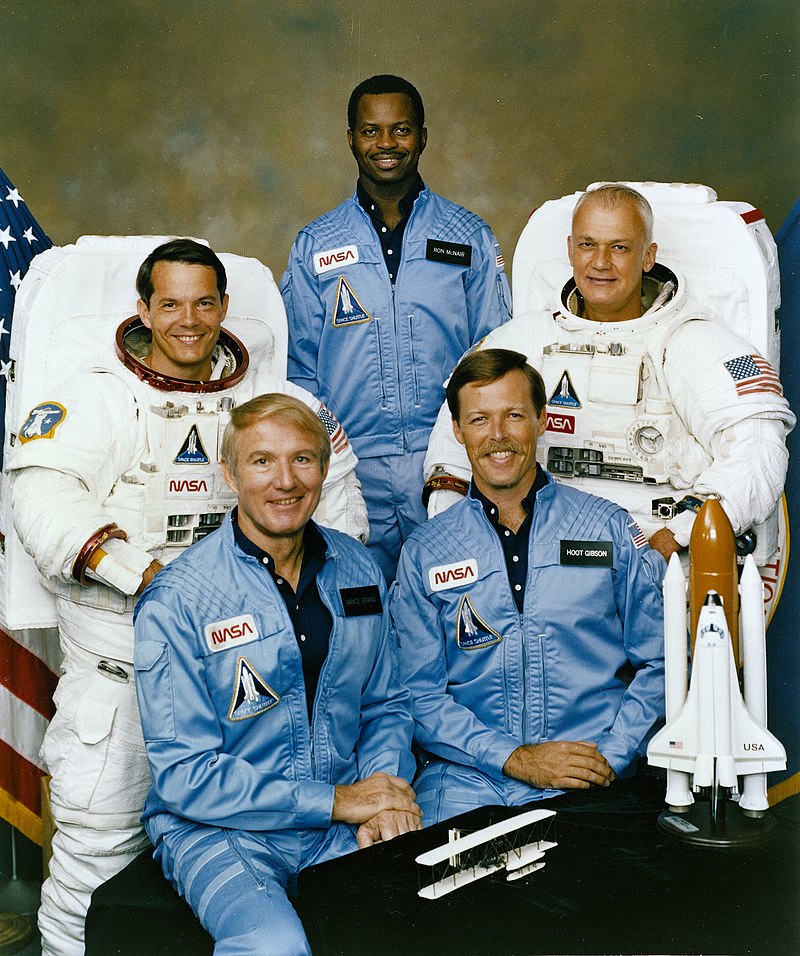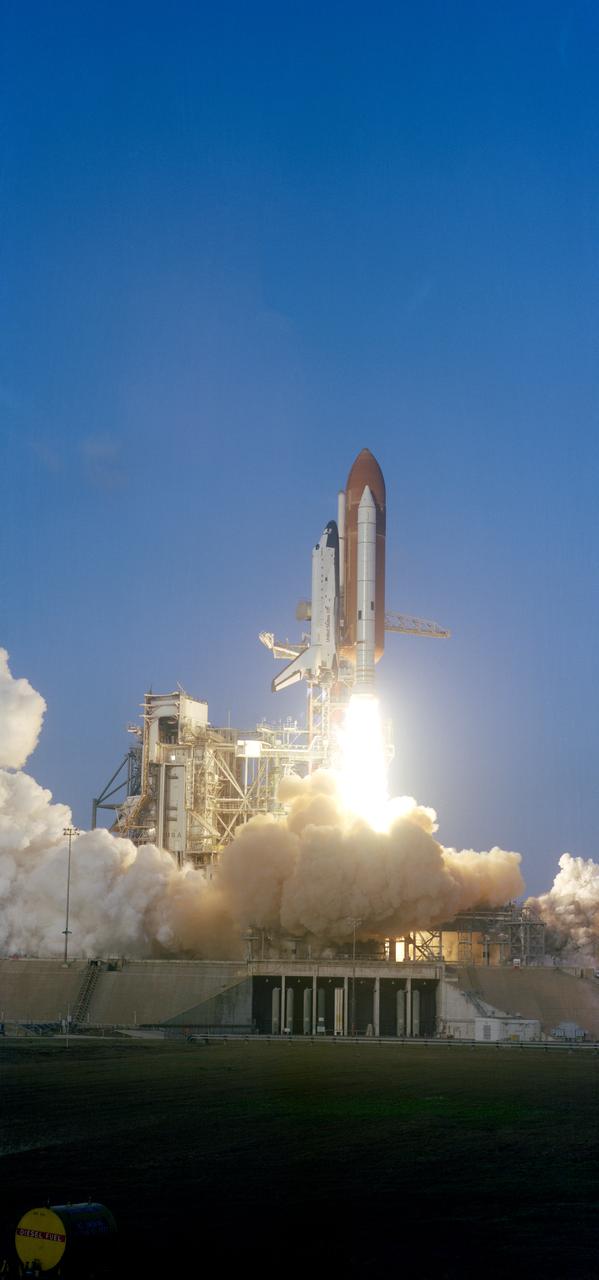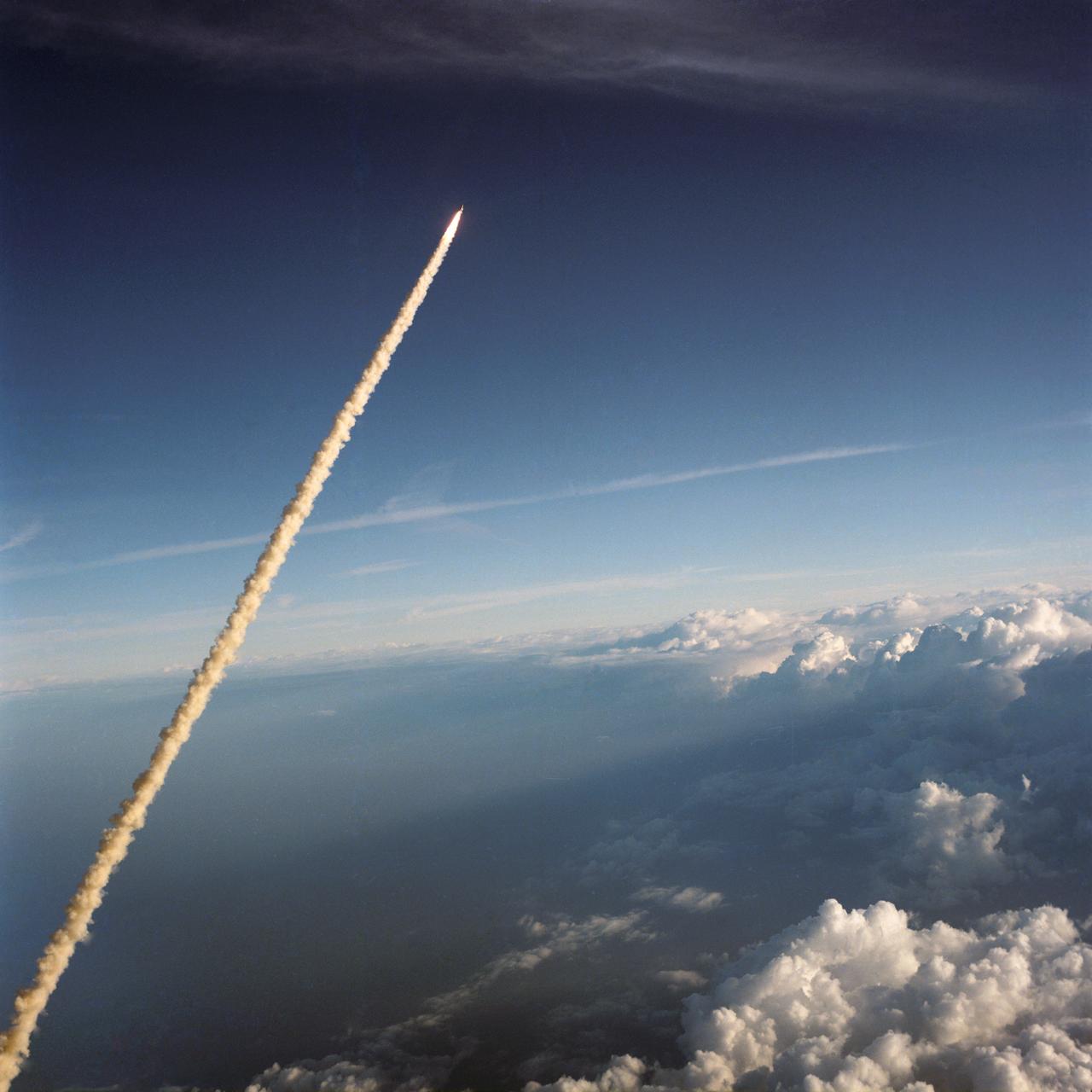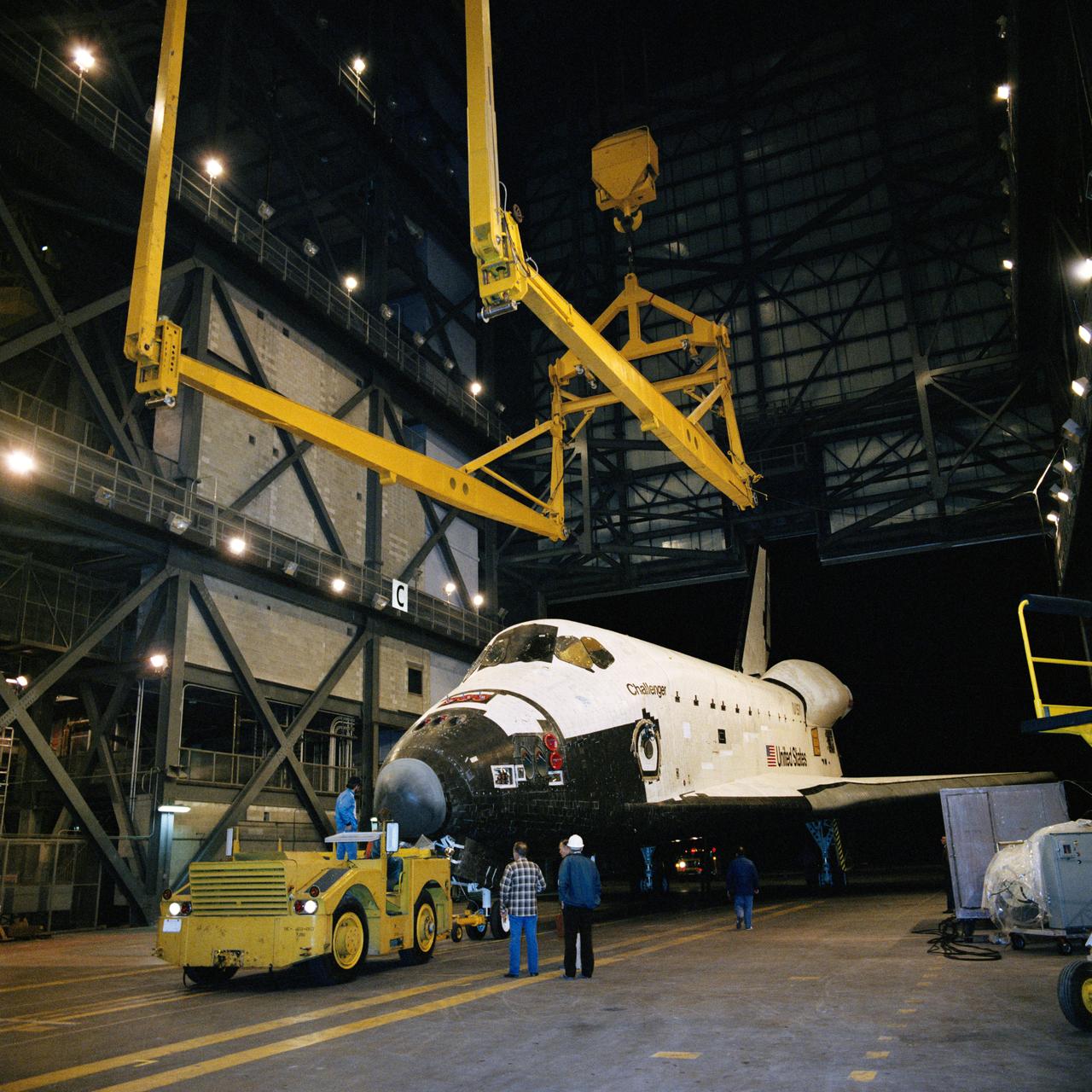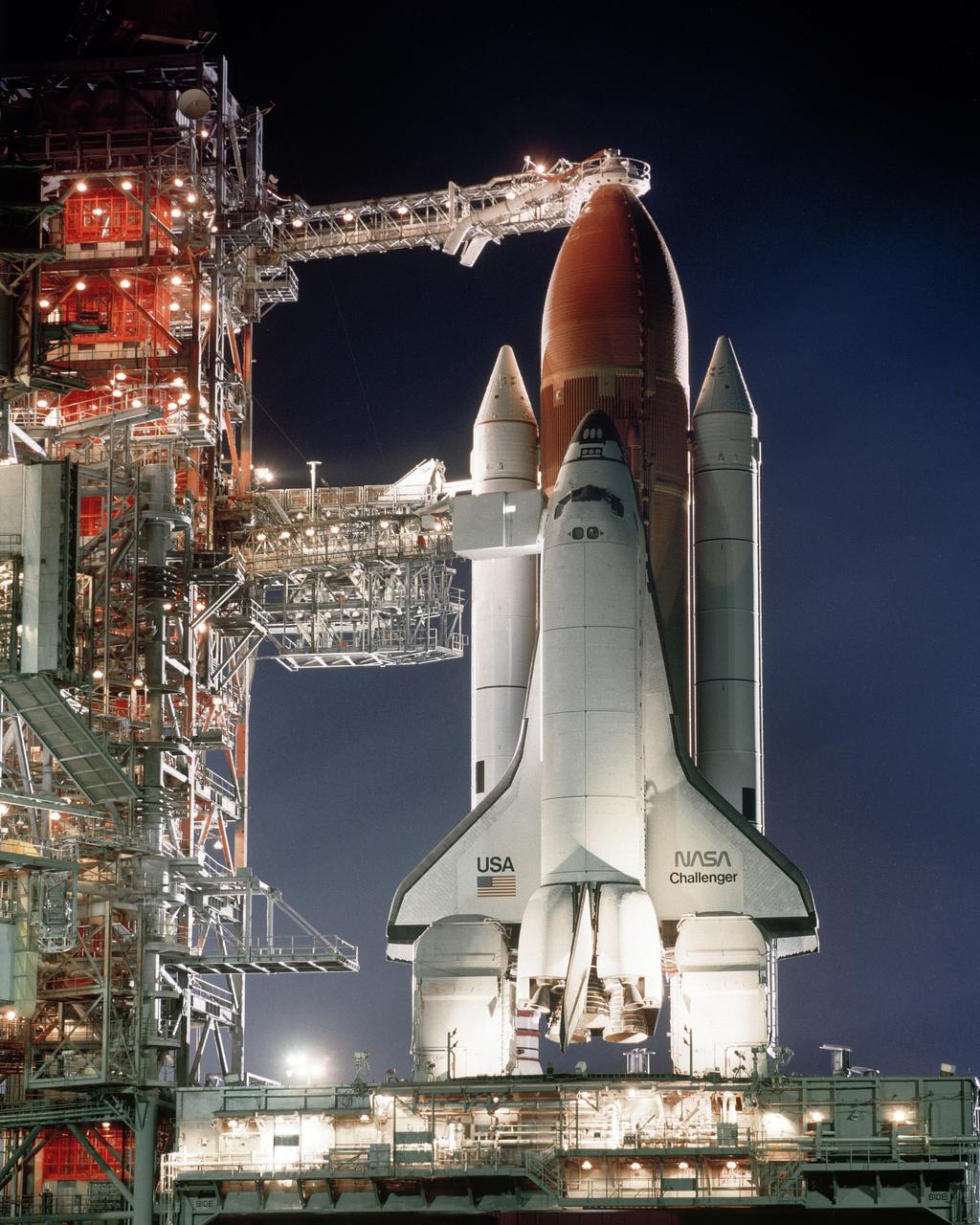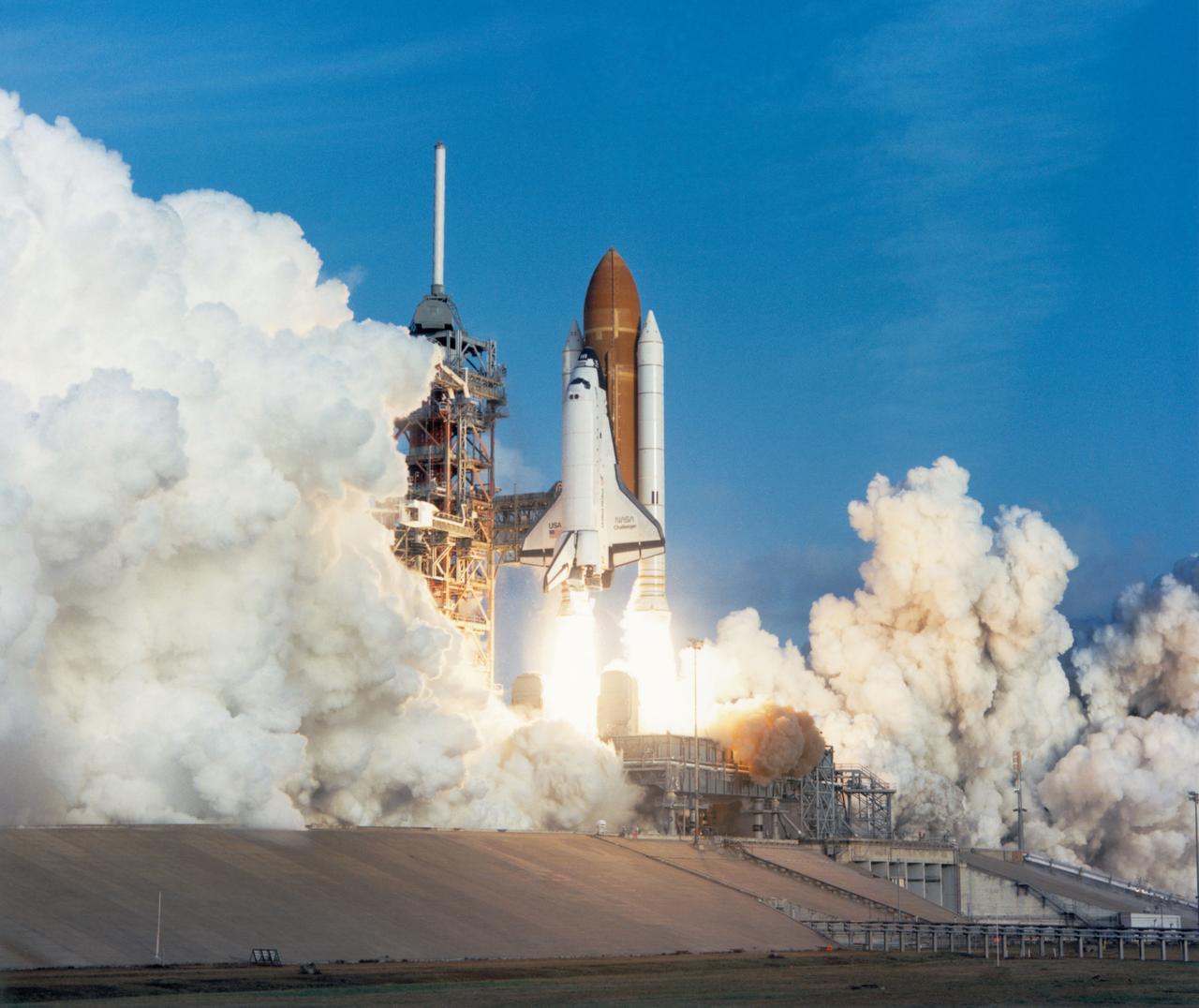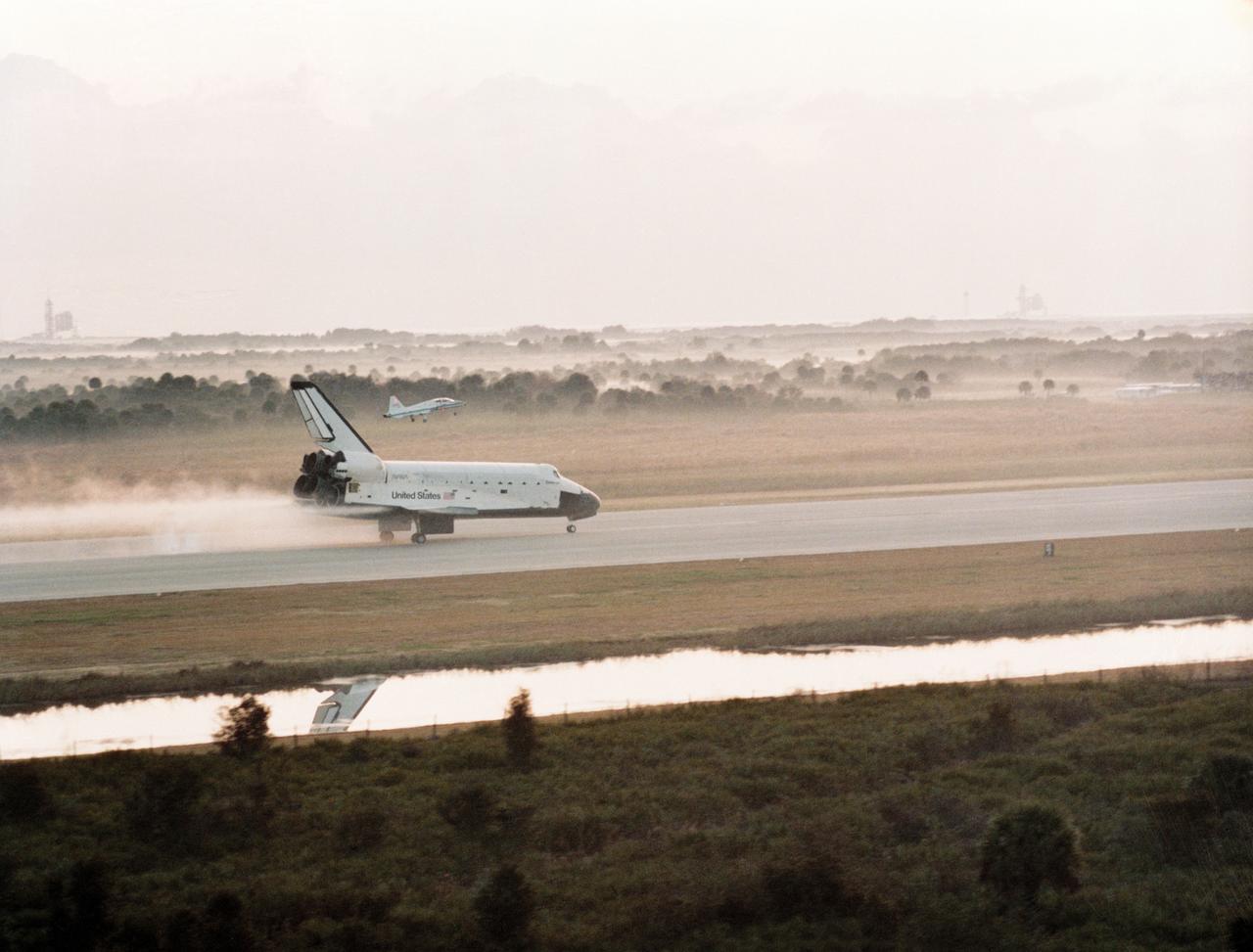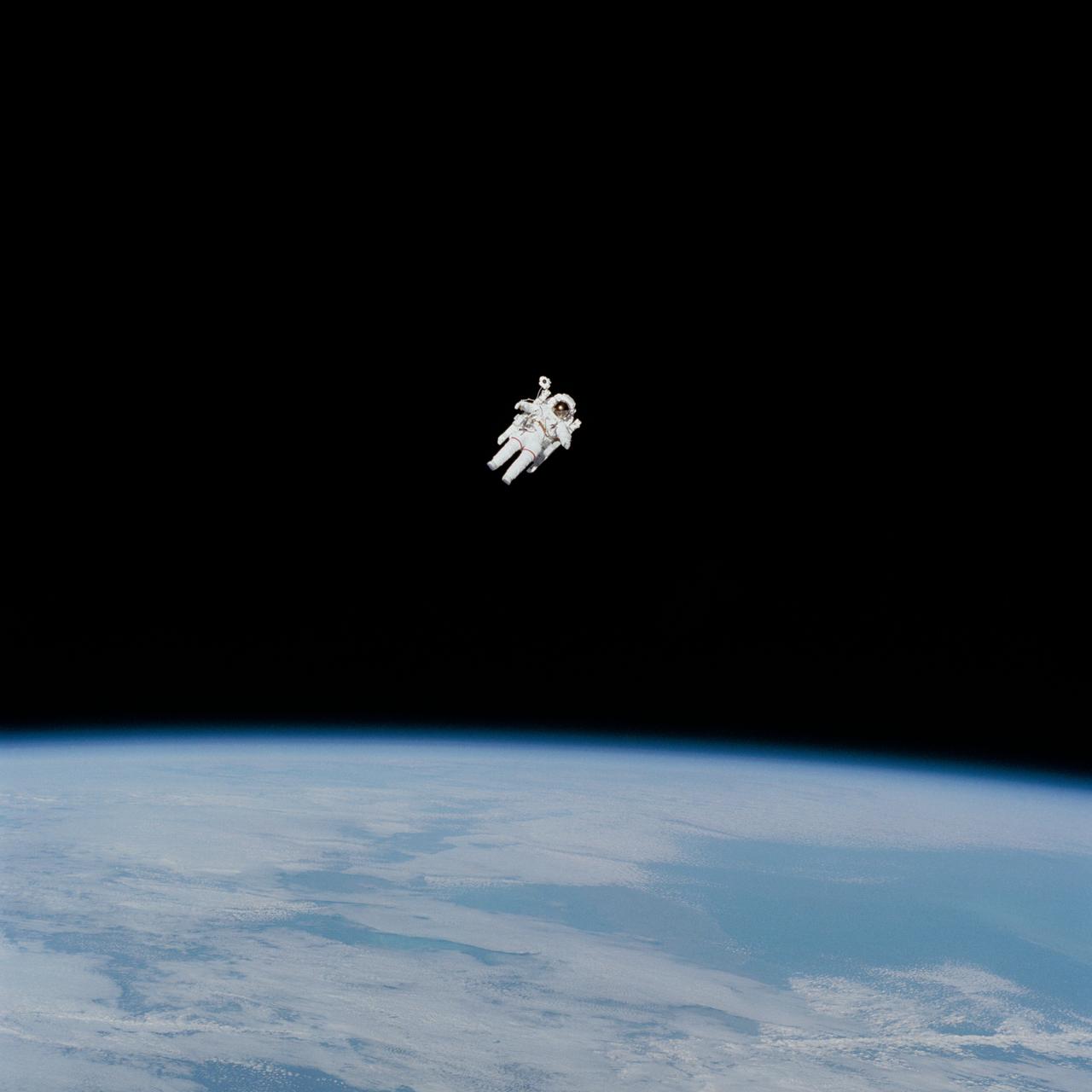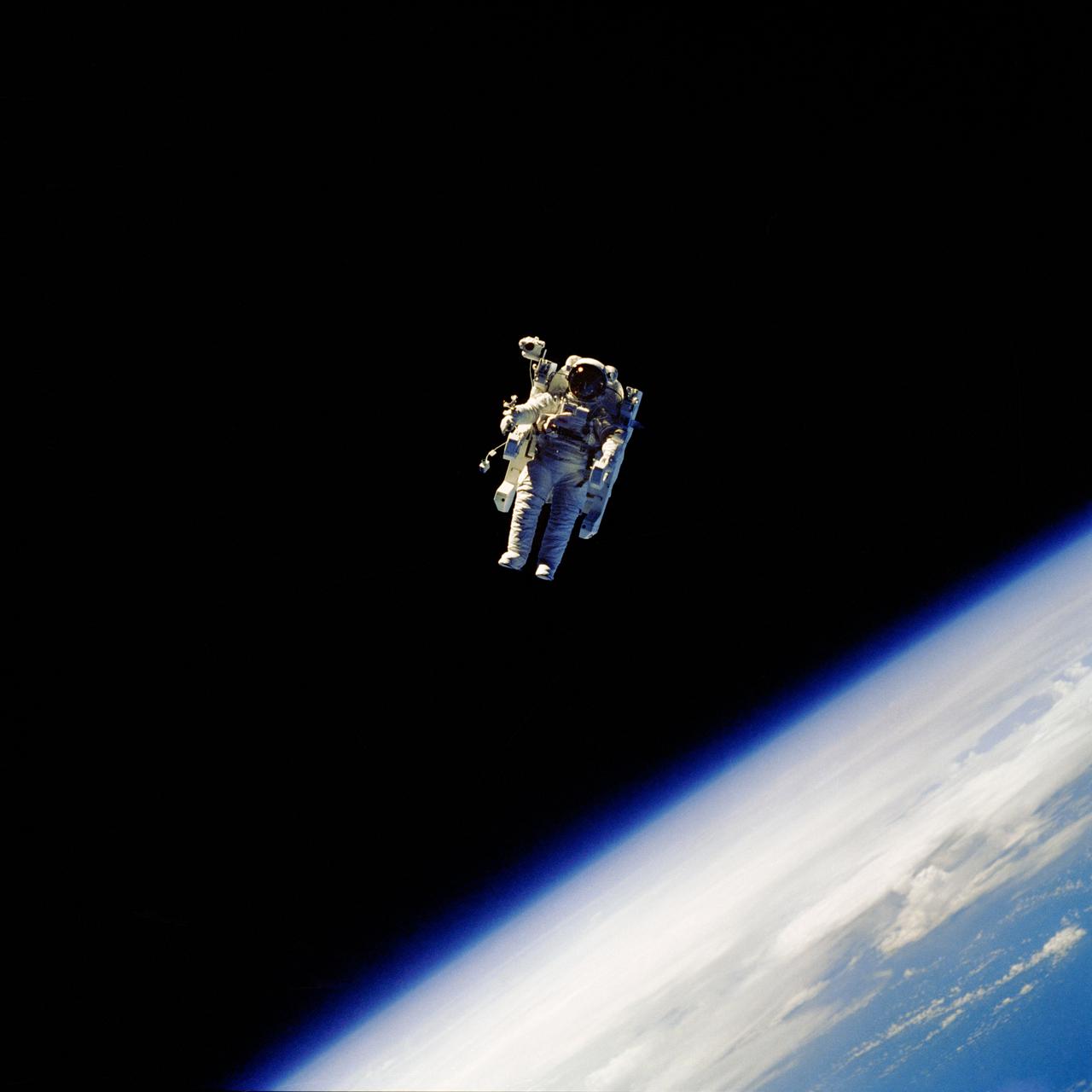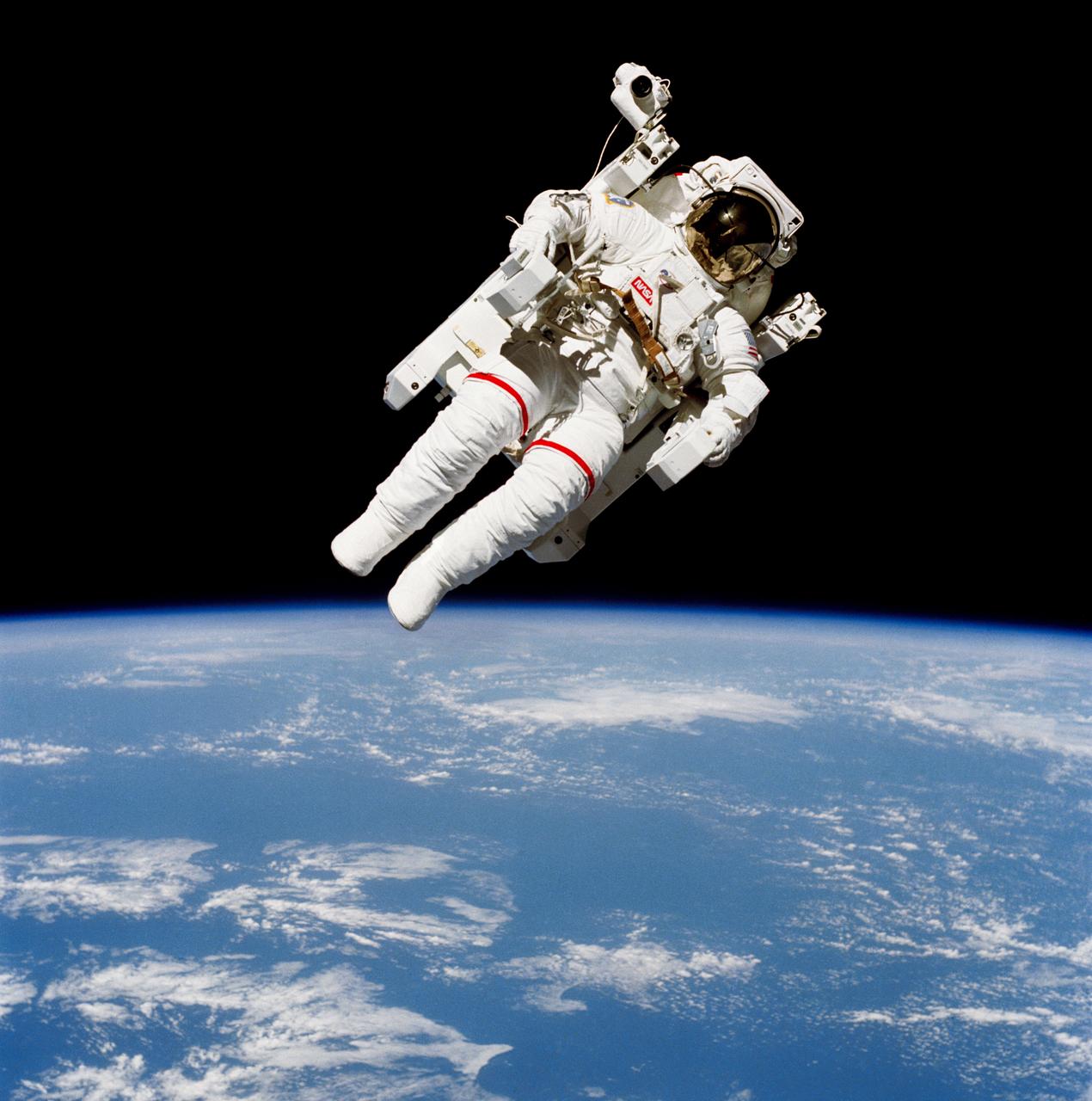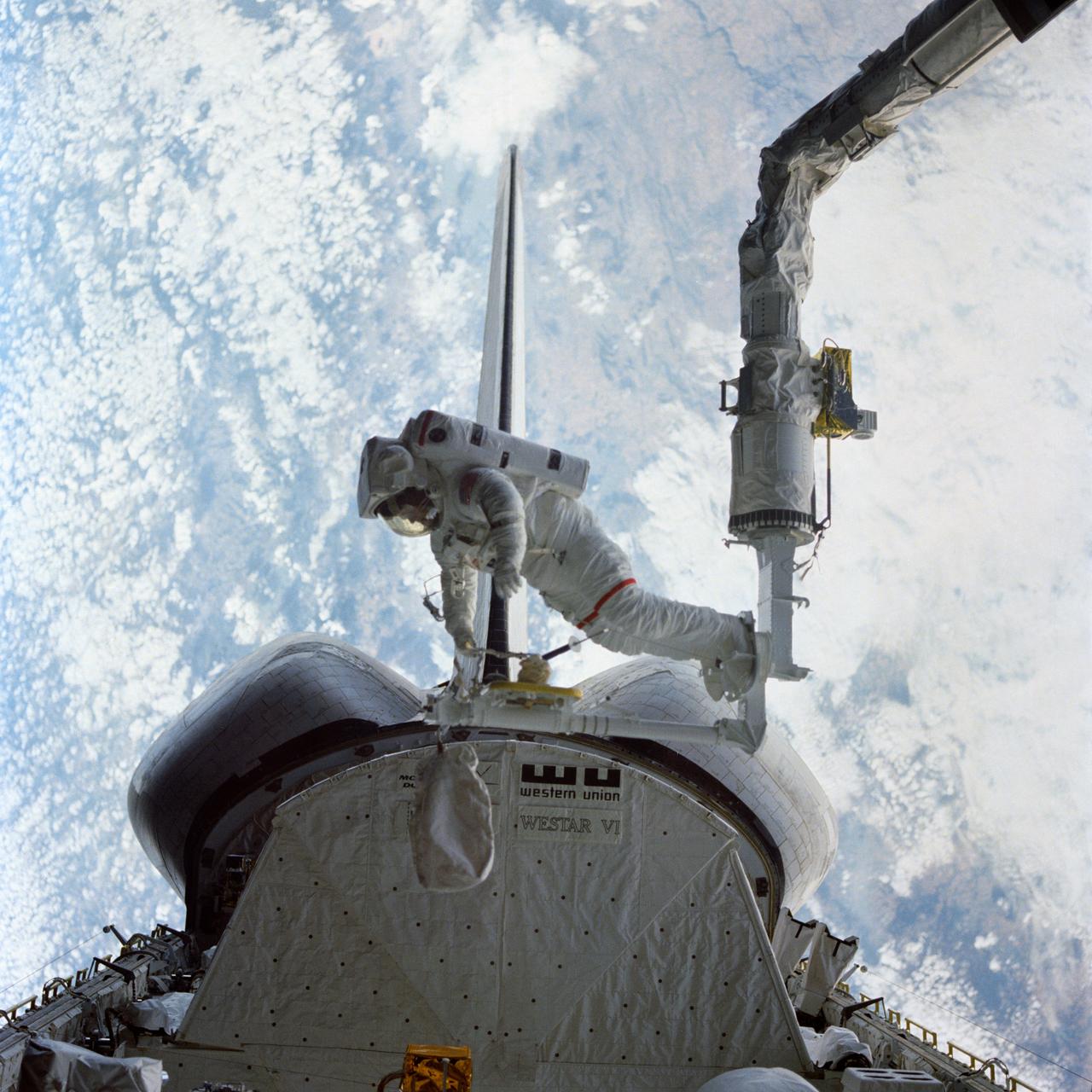STS-41B Fact Sheet
By Cliff Lethbridge

STS-41B — Challenger
10th Space Shuttle Mission
4th Flight of Challenger
Crew:
Vance D. Brand, Commander
Robert L. Gibson, Pilot
Bruce McCandless II, Mission Specialist
Ronald E. McNair, Mission Specialist
Robert L. Stewart, Mission Specialist
Orbiter Preparations:
Tow to Orbiter Processing Facility – September 10, 1983
Rollover to Vehicle Assembly Building – January 6, 1984
Rollout to Launch Pad 39A – January 12, 1984
Launch:
February 3, 1984 – 8:00:00 a.m. EST. Launch had been set for January 29, 1984 but slipped five days while the orbiter was still in the Orbiter Processing Facility to allow changeout of Challenger’s three auxiliary power units. This was a precautionary measure following the STS-9 fires. February 3 launch occurred as scheduled with no delays.
Landing:
February 11, 1984 – 7:15:55 a.m. EST at Runway 15, Kennedy Space Center. Rollout distance was 10,807 feet. Rollout time was 67 seconds. Mission duration was 7 days, 23 hours, 15 minutes, 55 seconds. Landing occurred during the 128th orbit. This was the first Space Shuttle landing at the Kennedy Space Center.
Mission Summary:
The mission featured the first untethered spacewalks, which were performed by astronauts McCandless and Stewart using Manned Maneuvering Units (MMU). WESTAR-VI and PALAPA-B2 satellites were deployed, but failure of the PAM-D rocket motors left them in improper low-earth orbits.
German-built Shuttle Pallet Satellite (SPAS) which had flown on STS-7 became the first satellite to be returned to Earth, refurbished and used again. However, SPAS remained in the Shuttle’s payload bay due to an electrical problem with the Remote Manipulator System (RMS).
The first of two spacewalks of the mission was performed on February 7, 1984 and lasted 5 hours, 55 minutes. The second spacewalk was performed on February 9, 1984 and lasted 6 hours, 17 minutes. Both spacewalks were intended to test the new, innovative MMU and validate procedures for an upcoming Space Shuttle mission.
RMS foot restraints were successfully tested during the spacewalks to test procedures for the Solar Max satellite repair mission, scheduled for STS-41C. Internal Rendezvous Target (IRT) tests for the same mission failed due to an internal malfunction.
Five GAS canisters were flown and Cinema 360 cameras were used by the crew. Other payloads included Acoustic Containerless Experiment System (ACES), Monodisperse Latex Reactor (MLR), Radiation Monitoring Equipment (RME) and Isoelectric Focusing (IEF).
SELECTED NASA PHOTOS FROM STS-41B
